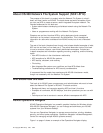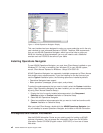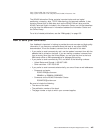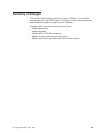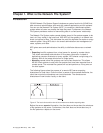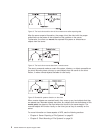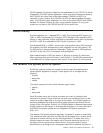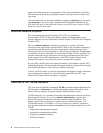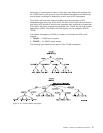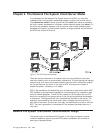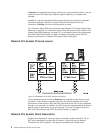
Chapter 1. What is the Network File System?
Introduction
OS/400 Network File System Support
introduces a system function for AS/400 that
aids users and administrators who work with network applications and file systems.
You can use the Network File System (NFS**) to construct a distributed network
system where all users can access the data they need. Furthermore, the Network
File System provides a method of transmitting data in a client/server relationship.
The Network File System makes remote objects stored in file systems appear to be
local, as if they reside in the local host. With NFS, all the systems in a network can
share a single set of files. This eliminates the need for duplicate file copies on every
network system. Using NFS aids in the overall administration and management of
users, systems, and data.
NFS gives users and administrators the ability to distribute data across a network
by:
v Exporting local file systems from a local server for access by remote clients.
This allows centralized administration of file system information. Instead of
duplicating common directories on every system, NFS shares a single copy of a
directory with all the proper clients from a single server.
v Mounting remote server file systems over local client directories. This allows
AS/400 client systems to work with file systems that have been exported from a
remote server. The mounted file systems will act and perform as if they exist on
the local system.
The following figures show the process of a remote NFS server exporting
directories to a local client. Once the client is aware of the exported directories, the
client then mounts the directories over local directories. The remote server
directories will now function locally on the client.
Before the server exports information, the client does not know about the existence
of file systems on the server. Furthermore, the client does not know about any of
the file systems or objects on the server.
Figure 2. The local client and its view of the remote server before exporting data
© Copyright IBM Corp. 1997, 1999 1





